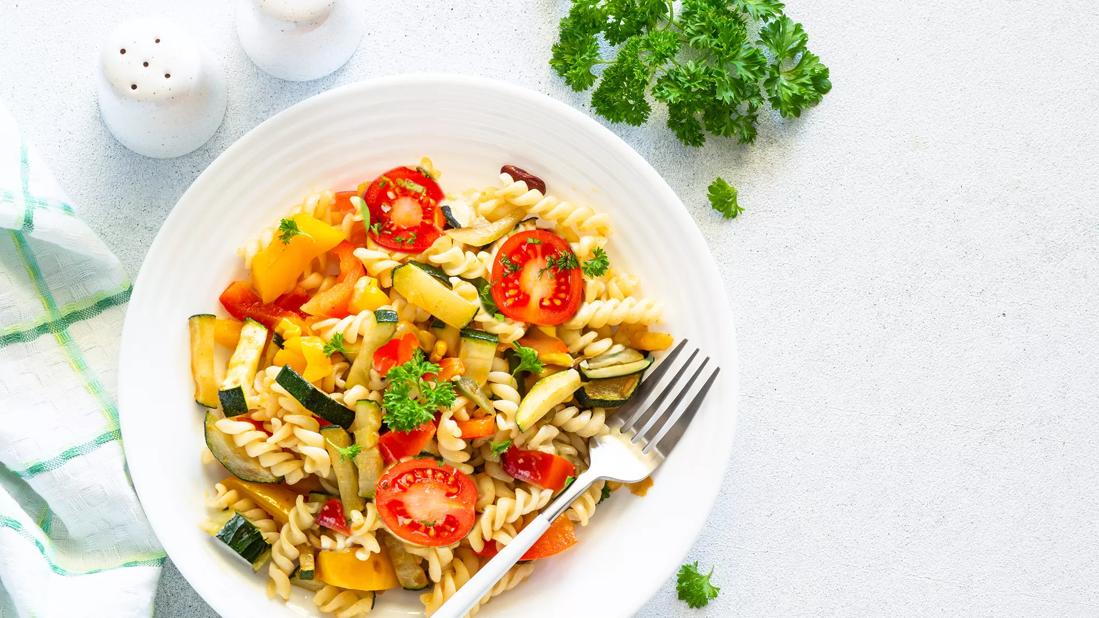Fresh, flavorful and sure to please!

This pasta salad is hard to forget with its delicious mix of fresh herbs like basil and fennel, various veggies, garlic, shallots, whole-wheat pasta and Parmesan cheese. Gardeners will especially find this recipe versatile, as vegetables can be swapped or added to the zucchini, squash, tomatoes and red pepper slices.
Advertisement
Cleveland Clinic is a non-profit academic medical center. Advertising on our site helps support our mission. We do not endorse non-Cleveland Clinic products or services. Policy
Advertisement
Servings = 4
Calories: 330 (19% calories from fat)
Total fat: 7 g (1 g saturated fat)
Protein: 12 g
Carbohydrate: 60 g
Dietary fiber: 12 g
Cholesterol: 0 mg
Sodium: 65 mg
Potassium: 950 mg
— One of more than 150 heart-healthy recipes from the Cleveland Clinic Healthy Heart Lifestyle Guide and Cookbook, available from Broadway Books and wherever books are sold.
Advertisement
Learn more about our editorial process.
Advertisement

Crunchy, hearty and sweet

Fresh tomato goodness with homemade olive oil and vinegar dressing

Fresh mint makes this veggie-packed salad aromatic and delicious

A great summer salad, perfect for picnics and cookouts

What better time than summertime to try this simple corn salad!

The best parenting style balances enforcing rules and showing plenty of love

Tips include cutting back on sugar, focusing on exercise and managing stress

It can be harder to let go when you’ve invested time, energy and emotions — but it might be the healthier choice long term